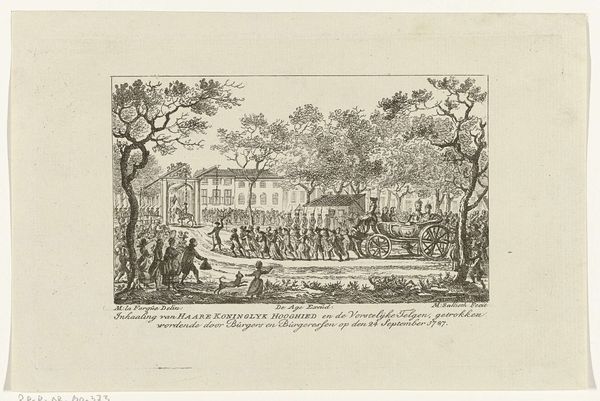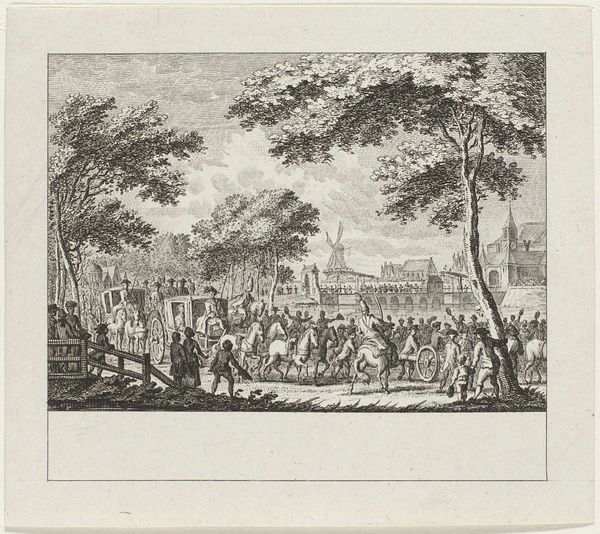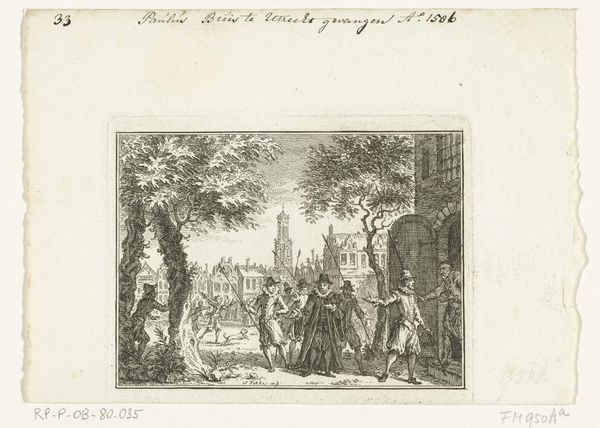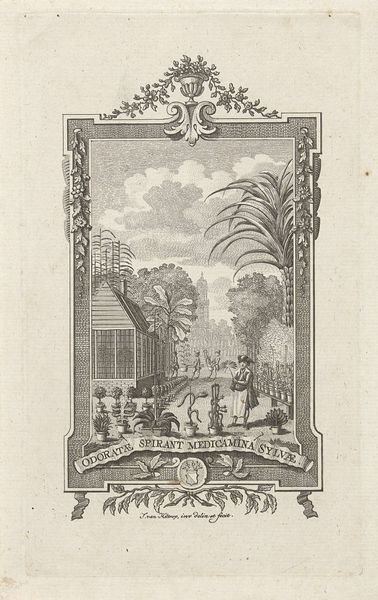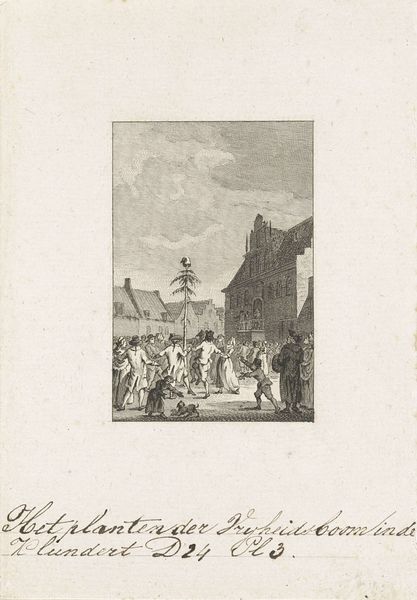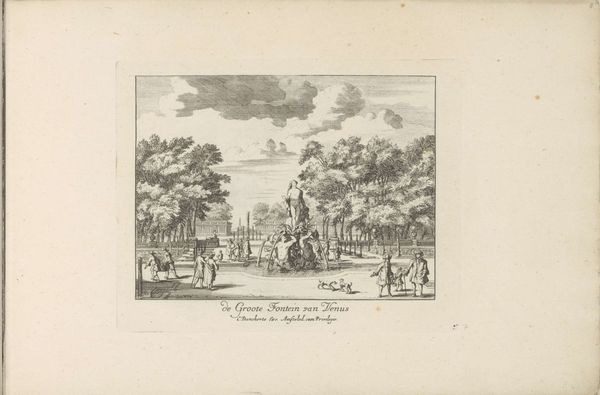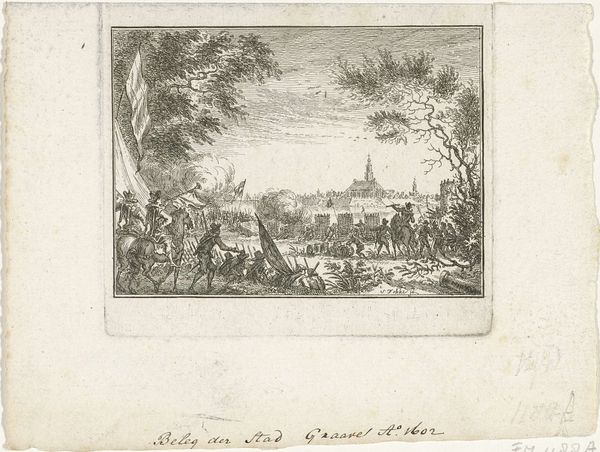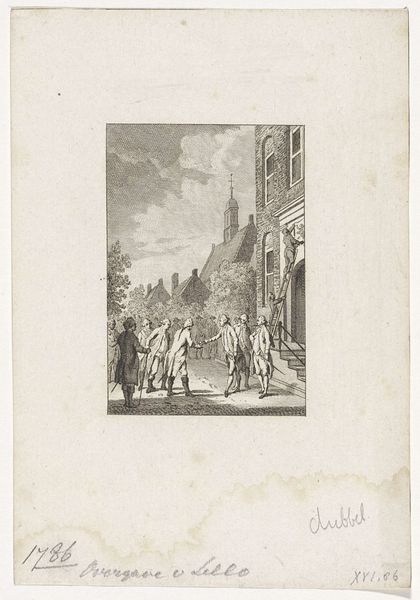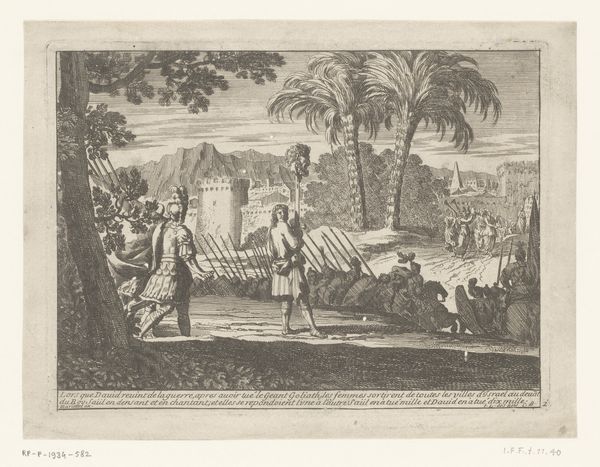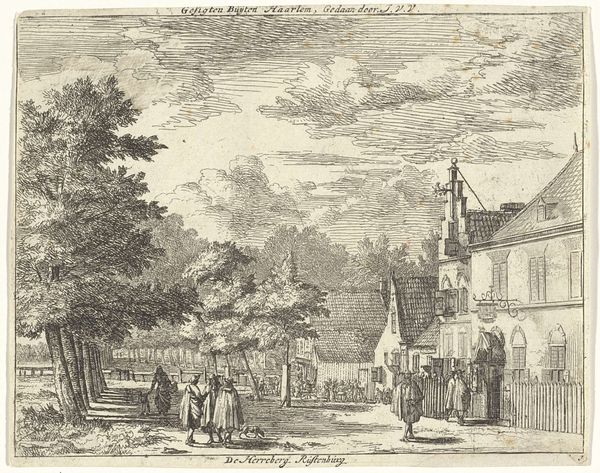
drawing, print, etching, ink, engraving
#
drawing
#
neoclacissism
#
dutch-golden-age
# print
#
pen sketch
#
etching
#
old engraving style
#
landscape
#
personal sketchbook
#
ink
#
sketchwork
#
ink drawing experimentation
#
pen-ink sketch
#
15_18th-century
#
pen work
#
sketchbook drawing
#
cityscape
#
history-painting
#
storyboard and sketchbook work
#
sketchbook art
#
engraving
Dimensions: height 127 mm, width 100 mm
Copyright: Rijks Museum: Open Domain
Editor: Here we have Reinier Vinkeles's "The Entry of the Hollandse Gardes in Amsterdam, 1787," created sometime between 1787 and 1795. It's an etching, and the fine lines really capture a lively scene. What's your take on this bustling cityscape? Curator: For me, this isn’t just about historical accuracy; it’s about witnessing a shift in power. Vinkeles, consciously or not, immortalized a fleeting moment of authority, but the sketch-like nature makes me wonder what the artist really thinks about that show of force? Notice how the clean, Neoclassical architecture looms, perhaps representing the established order, as the energetic chaos erupts below, where the pen strokes seem almost frenzied. Is that admiration, or barely concealed… something else? Editor: That's interesting. I was just focusing on the crowd. You are making me wonder how "objective" documentary art ever really is... What do you mean? Curator: The *appearance* of recording facts shouldn't fool us! A good question to ask when considering art with political content is "Who benefits from the picture being created in *this* way, at *this* time?". The Gardes are center stage, literally elevated on the bridge. Is that objective truth or an attempt to persuade the viewer of something? Editor: Hmm, so maybe the artist subtly emphasized their importance, or perhaps, as you said, something else! Curator: Precisely. And the fact that this event is rendered in ink— a medium both permanent and prone to fading—adds another layer. Ephemeral and eternal, the artist is always involved, even when supposedly just documenting, it would seem! How differently might the statement be rendered by a different artist? Editor: I guess I usually think of history paintings as being more clear cut, but now I am not so sure anymore... Curator: And maybe there aren't any clear answers – but that in itself is kind of beautiful, isn't it? I now feel very curious about this piece of history, now!
Comments
No comments
Be the first to comment and join the conversation on the ultimate creative platform.
